Claude Berri’s Jean de Florette and Manon des Sources (1986): Criterion Blu-ray review
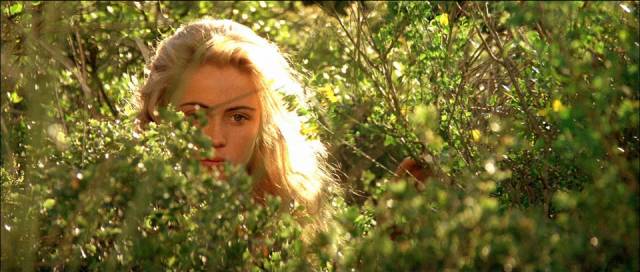
The film critics of Cahiers du Cinema who launched the nouvelle vague in the late 1950s rejected what they called the “tradition of quality” in French filmmaking. This was a practice which emphasized craft and frequently drew on literary sources, casting French cinema as conservative and bourgeois – those who escaped their censure were people like Jean Vigo and Jean Renoir, while the majority of their praise was reserved for certain Hollywood filmmakers whom they saw as asserting artistic individuality against the constraints of the Hollywood studio system. As important as their break with the past was, many of the filmmakers they had rejected have subsequently been reevaluated – Jean Grémillon, Julian Duvivier, Claude Autant-Lara… Their evaluation of Marcel Pagnol was mixed; some appreciated his narrative abilities and humanist attitude, while others accused him of making little more than filmed theatre rather than cinema.
Pagnol had indeed begun as a successful playwright in the 1920s, turning to film in the early ’30s following the success of films based on the first two parts of his theatrical Marseilles Trilogy (Alexander Korda’s Marius [1931] and Marc Allégret’s Fanny [1932]; he himself directed the third part, César, in 1936). In addition to writing, producing and directing numerous films himself throughout the ’30s, ’40s and early-’50s, more than a hundred films have been adapted from his work since 1931. His final original film was Manon des Sources (1952), which he expanded into a two-part novel, L’Eau des collines, in 1963.
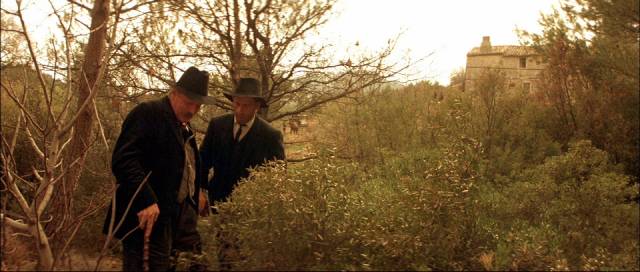
Ironically, two decades after the upheavals of the New Wave, French cinema resurrected the “tradition of quality” with a number of big-budget productions with period settings and big-name casts, frequently adapted from literary sources. Among these, one of the most impressive was Claude Berri’s two-part adaptation of L’Eau des collines, a sumptuous four-hour drama with the air of a 19th Century novel, its complex narrative shot through with a potent mix of tragedy and irony, which in its final stretch risks slipping into farce with its series of dark secrets revealed, transforming the significance of many of the story’s preceding events. And yet Berri’s firm grip on the material and the magisterial cast render the final moments as a deeply moving meditation on lives unnecessarily wasted by a fate shaped by human weakness and misunderstanding.
Set in the 1920s, and spanning a decade, Jean de Florette and Manon des Sources (released three months apart in 1986) reflect Pagnol’s love of his native Provence, a harsh yet beautiful landscape punctuated with small villages and populated by complex, deeply flawed characters. The struggle to survive in this land gives rise to petty rivalries, feuds which go on for years long past anyone’s ability to remember their causes. Life here is tied to the unforgiving rhythms of nature, back-breaking labour at the mercy of the weather. It’s no wonder that people grow hard here, driven by the imperatives of self-interest which are at odds with their religion’s supposed moral dictates.
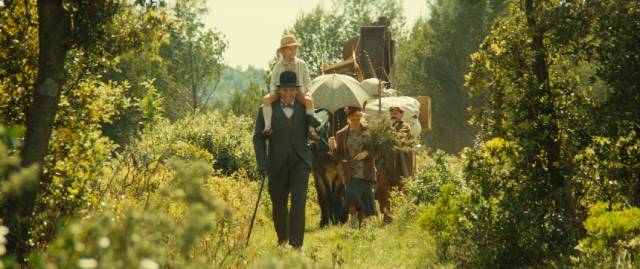
The story revolves around a section of land, quite barren now, though there is a spring which has been choked by neglect. People of the area know of the spring, but Pique-Bouffigue (Marcel Champel), the old man who lives on the land, has little interest in reviving it. His neighbour Cesar Soubeyran, nicknamed Le Papet (Yves Montand), is the area’s patriarch and when his nephew Ugolin (Daniel Auteuil) returns from the army with a dream of growing red carnations, he tries to buy the land. Infuriated by the old man’s refusal, Le Papet attacks him and accidentally kills him. Then he waits for for whoever inherits the land to show up so he can buy it – after first sealing the spring with cement to make sure the land is virtually valueless.
What he didn’t expect was the arrival of the old man’s nephew with his wife and young daughter and a plan to settle on the land. Jean Cadoret (Gérard Depardieu) is the son of Pique-Bouffigue’s sister, Florette, who went away and married a man from another village, something seen as a betrayal by the community. Le Papet and Ugolin quickly discover Jean’s identity, but make sure that no one else in the village knows. While making a show of being helpful and offering practical advice to Jean, the pair stir up disdain and resentment in the village – Jean is a hunchback, an educated former tax collector who brings city attitudes and book knowledge to his grandiose plans for growing vegetables and raising rabbits. Everything about him seems antithetical to the hard-earned traditional ways of the local farmers and everyone waits to see him fail.

But they have all underestimated Jean’s determination and his capacity for enduring hardship. The heart of the first film is this character, an idealistic romantic, good-natured and trusting, who is determined to make this new life succeed. Seasons stretch into years and Jean refuses to give up even as life becomes almost unbearably difficult – and all the while Le Papet and Ugolin know that the hidden spring would solve all his problems. In time, we will learn what underlies Le Papet’s determination to destroy Jean, but Ugolin is ambivalent; dominated by his uncle, he nonetheless seems to admire Jean to some degree for his commitment, and is uncomfortable with the knowledge that Jean’s plans would surely succeed if he had access to the spring.
In a final act of desperation, Jean gets a mortgage from Le Papet and buys supplies, including dynamite, with which to find the spring that the deeds to that land say is there. He searches with a dowsing rod, finally settling on a spot where he digs down to the rock and then sets the explosive. Too eager, he runs in before the explosion has settled and is killed by falling rocks. Equally eager, Le Papet and Ugolin can’t even wait until Jean’s wife Aimee (Elisabeth Depardieu) and daughter Manon (Ernestine Mazurowna) have moved away before unblocking the spring. Manon sees them and overhears them mocking her dead father … which is where part one ends.
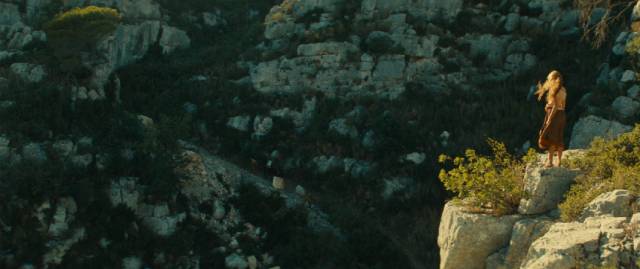
Years later, Manon (now Emmanuelle Béart), left behind when her mother returned to her career as an opera singer, is an almost feral creature living in the hills with a small herd of goats, avoiding the people she knows betrayed her father. Now, where Jean had once tried to raise his rabbits, Ugolin has extensive beds of luscious red carnations fed by the spring which produces so much water that it feeds a tank which supplies the nearby village. When Le Papet urges Ugolin to find a wife and carry on the family name, he becomes obsessed with the idea that Manon is the one he loves, and he sets out to win her over. All too aware of the injustice Ugolin and his uncle did to her father, she’s pushed over the edge. Accidentally discovering an underground grotto, she finds the deeper source of the spring and seals it up, cutting off not only the water feeding Ugolin’s flower beds, but also the communal supply for the village and the surrounding farms. This is catastrophic for the community in the midst of a drought.
When everyone desperately attends church, the curé preaches a harsh sermon, declaring that this is all due to an undiscovered crime, an accusation which finally stirs Ugolin’s conscience. He’s sure that the curé was looking directly at him and can’t remain silent – refusing to keep quiet despite Le Papet’s angry insistence, his desire to atone takes the form of a public declaration of his love for Manon. Le Papet’s denials convince no one, and he throws the accusations back on the other villagers, all of whom knew about the spring but said nothing because “you don’t interfere in other people’s business”. This triggers the first of a series of revelations which alter the implications of the narrative – Le Papet and Ugolin had kept it secret that Jean wasn’t just a fool from the city, but was the nephew of Pique-Bouffigue, the son of Florette – that he was in fact “one of them”.
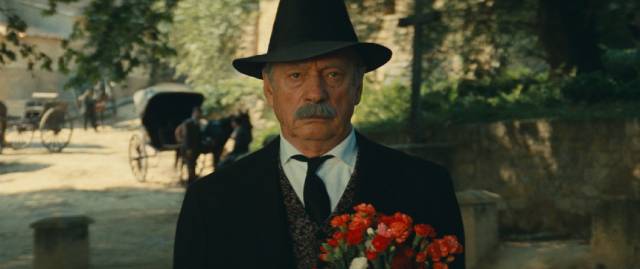
Subsequent revelations make clear why Le Papet never married, why Jean’s mother went away, perhaps even why he had been deformed. The final stretch of the film is suffused with an overwhelming sense of melancholy and loss, of wasted lives and the roots of bitterness which had set events in motion long before Jean and his family ever arrived. Berri and co-writer Gérard Brach reflect Pagnol’s own deeply humanistic view, which makes room for empathy for even the worst characters – including the monstrously arrogant Le Papet whose greed has been responsible for two deaths.
Berri tells this story with a palpable sense of the land and how it shapes those who inhabit it. One of the film’s most powerful achievements is its evocation of the rhythms of nature and the visceral details of the work necessary to survive in a beautiful but not entirely hospitable region. Much of the first film is taken up with the labour Jean commits to in order to transform the neglected land he has inherited, breaking soil, planting, erecting the fences to contain and protect his rabbits, and the endless trek back and forth over the hill to fetch water. Few films have evoked as potently as this the sense of sheer physical exhaustion that results from the daily grind of such labour. If the second film seems somewhat lighter, it’s because its focus shifts away from this effort, concentrating instead on resolving the conflicts within and between the characters – particularly Manon and Ugolin – which are rooted in the crushed dream of Jean de Florette, a decent man destroyed by petty malice.
*
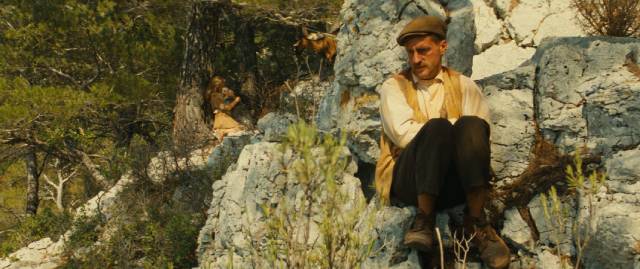
With superb cinematography by Bruno Nuytten and an excellent cast – Depardieu was never better and Montand brought the full authority of decades of experience to the role of Le Papet, but the real standouts are the less experienced Daniel Auteuil and Emmanuelle Béart, who together give Manon des Sources a deep emotional resonance – Berri reasserts the dramatic potential of the kind of literary adaptation so forcefully rejected by the New Wave.
*
The disks
Mastered from Pathé‘s 4K restorations, Criterion’s two-disk set has a gorgeous image which showcases the Provençal landscape, making Jean’s passion for his rural project totally understandable. The ambient sounds of wind, rain, birds and insects add depth and texture to the narrative, well supported by Jean-Claude Petit’s score which is woven from a theme from Verdi’s La Forza del Destino.
The supplements
The set includes two documentaries by Jérôme Wybon. Claude Berri: The Card Dealer (2018, 59:40) covers Berri’s career as both writer-director and influential producer (with far more credits as the latter), while The Force of Destiny (2017, 46:33) focuses specifically on the production of Jean de Florette and Manon des Sources, both shot simultaneously over nine months to capture the changing seasons.
There are also a pair of trailers (2:50, 2:54) and a booklet with an essay by film scholar Sue Harris.
*
Having learned that Pagnol himself had filmed a first version of this story in 1952, I immediately ordered a Blu-ray of that from France, which I hope to receive soon.
Comments